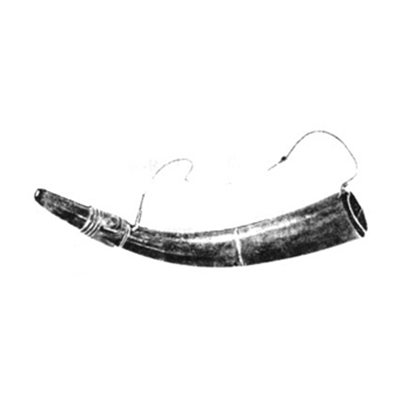Niujiao overview

Niujiao (pinyin: Niujiao), which originated from primitive hunting activities such as witchcraft, is closely related to the Han, Yao, Yi, Miao, Jingpo, Naxi, Nu, Dai, Buyi, Tujia, Gelao, Li and other ethnic groups. Qiming musical instruments are popular in Guizhou, Guizhou, Yunnan, Sichuan, Hunan, Guangdong, Hainan and other provinces in China.
The horns are mostly made of naturally grown buffalo or yellow ox horns, generally sourced locally, with a total length of 40-70 cm and different sizes. shape, or install a bamboo or wooden mouthpiece.
The horn has no sound hole and no fixed pitch. Depending on the mouth shape change and breath control, different pitches can be played. The small ones are high-pitched and sharp; the large ones are rich and melodious, which can be used for solo or ensemble. In some areas of Hunan, there are also popular horn tunes such as "Jade Emperor Fu", "Lao Junfu", "Goat Crossing Au".
Cow horns have been widely used in many dynasties in the history of our country. In prehistory and Xia and Shang dynasties, both ox horns and pottery horns were used as signal devices. During the Qin and Han Dynasties, horns have been used in military honor guards and advocacy music. In addition to the natural horns of animals, horns made of bamboo, wood, leather, copper and other materials also appeared. It can be seen from the "Han Dynasty Drumming Band Picture" that the horns used in the Han Dynasty were very large, not natural horns such as cow horns, but artificial horns.- type:lip vibration instrument
- popular area:Guangxi, Guizhou, Yunnan, Sichuan, Hunan, Guangdong, Hainan and other provinces
- Applicable fields:Solo or Ensemble
overview of other similar instruments
- sanyanxiao overview
- Daguangxian overview
- Leiqin overview
- hahao overview
- yandundagu overview
- Han Xiaozheng overview
- Fang Xiang overview
- guanzi overview
- zhuqin (Dao Qin) overview
- zhuiqin overview
- bangzi overview
- three-stringed piano overview
- Gehu overview
- xiao overview
- xiaokonghou overview
- Konghou overview
- Sheng overview
- suona overview
- hulusi overview
- gushao overview
 渝公网安备 50010702504639号
渝公网安备 50010702504639号